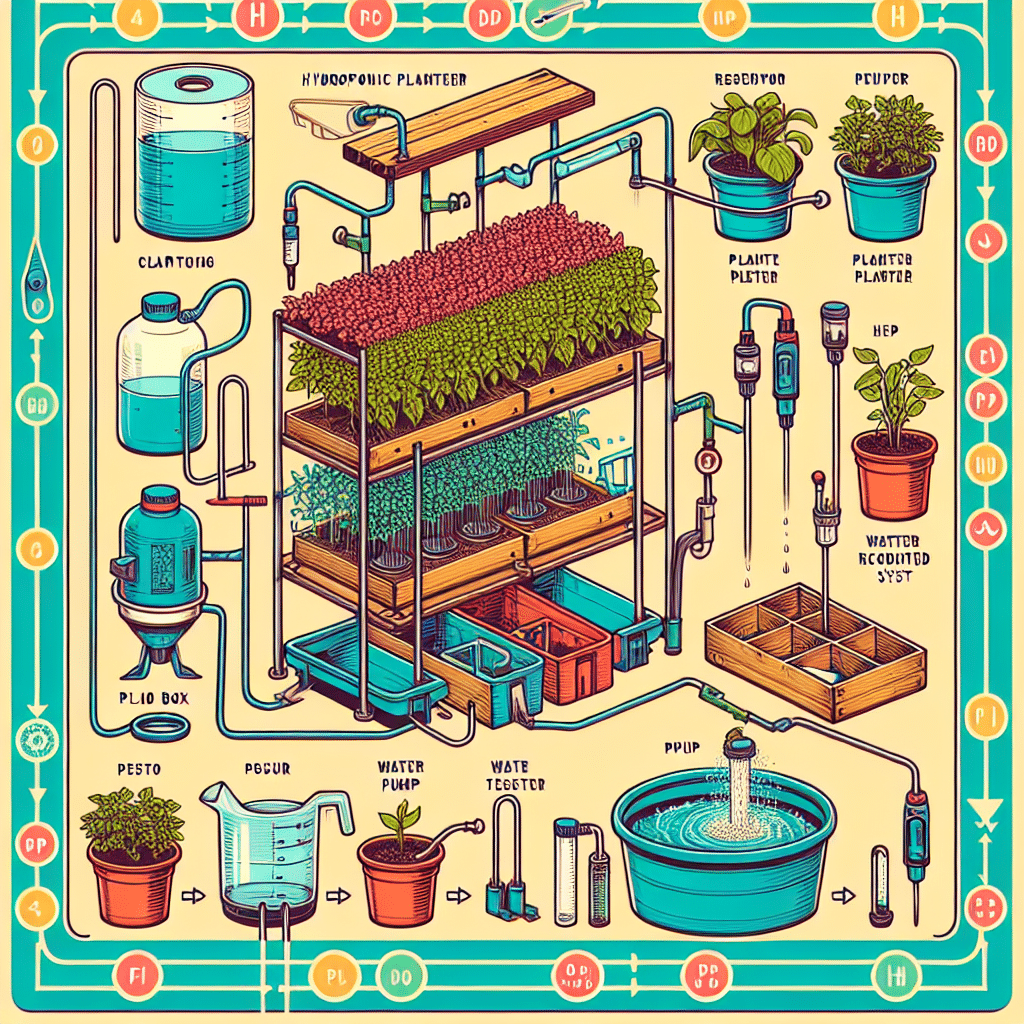Step-by-Step Guide for Creating Your Own Hydroponic Planter
Understanding Hydroponics
Hydroponics is an innovative gardening method that involves growing plants without soil. Instead, plants receive nutrients through a water-based solution. This technique allows for faster growth, higher yields, and the ability to cultivate plants in environments where traditional agriculture may not thrive. Creating your hydroponic planter at home can be an exciting project that results in lush green plants or vegetables.
Materials Required
- Growing Container: You can use plastic bins, PVC pipes, or any waterproof container.
- Net Pots: These will hold your plants and growing medium.
- Growing Medium: Popular options include coconut coir, rock wool, or clay pellets.
- Nutrient Solution: Hydroponic nutrients are available in liquid or powdered form, specifically designed for plant growth.
- Water Pump: For nutrient circulation in systems like deep water culture (DWC) and nutrient film technique (NFT).
- Air Pump and Stone: For oxygenating water in DWC systems.
- Tubing: To connect your water pump and direct water to your plants.
- pH Testing Kit: To monitor the acidity of your nutrient solution.
- Light Source: Grow lights or natural sunlight depending on your setup.
- Timer: For automating the light and pump systems.
Step 1: Designing Your Hydroponic System
Decide which hydroponic system you want to build. Common options include:
- Nutrient Film Technique (NFT): A thin film of nutrient solution flows over the plant roots.
- Deep Water Culture (DWC): Plants are suspended in nutrient-rich water.
- Ebb and Flow: The growing medium is periodically flooded with nutrient solution and then drained.
Select a design that fits your available space and the plants you wish to grow. Sketch out your design to visualize where each component will go.
Step 2: Preparing the Growing Container
Take your chosen container and ensure it is clean and free from any harmful chemicals. If you are using a plastic bin, drill holes on the lid for net pots to rest on. Ensure these holes are adequately spaced to prevent overcrowding. If using PVC pipes, ensure they are cut into specific lengths based on the number of plants you wish to grow.
Step 3: Setting Up the Net Pots
Fill each net pot with your chosen growing medium. Ensure it is conducive to providing stability for the plants while allowing for good drainage and aeration. Place seedlings or seeds directly into these net pots. If you are starting from seeds, consider germinating them in a propagation tray before transferring them to the net pots.
Step 4: Mixing the Nutrient Solution
Follow the instructions available on the hydroponic nutrient pack for mixing the solution. Use distilled or purified water for the best results. Mix it in a separate container, ensuring it’s at the right concentration. Utilize the pH testing kit to ensure the pH level is between 5.5 and 6.5 for optimal nutrient uptake.
Step 5: Setting Up the Pump System
If you chose DWC or NFT, this step is crucial. Install your water pump inside the reservoir where the nutrient solution will reside. Connect tubing from the pump to the grow containers where your net pots are located. For systems requiring higher aeration like DWC, connect the air pump and stone at this stage.
Step 6: Adding Water and Nutrient Solution
Fill the reservoir with your prepared nutrient solution. Ensure the water level is appropriate for the method you are using. For DWC, the roots should be submerged in water, while for NFT, the water should just touch the bottom of the net pots.
Step 7: Lighting Arrangement
Install your grow lights above the planter if you are growing indoors or ensure you have a location with adequate sunlight. The ideal distance from the lights to the plants usually ranges from 12 to 24 inches, depending on the type of grow lamp used. Set a timer for 16 hours of light per day to initiate growth effectively.
Step 8: Maintaining Environmental Conditions
Monitor humidity, temperature, and light conditions regularly. Ideal temperatures for most hydroponic plants range between 70°F to 75°F. Humidity levels should be around 50% to 70% for seedlings. Adjust your setup accordingly by using fans for ventilation or heaters, if necessary.
Step 9: Monitoring Plant Growth
Regularly check the growth of your plants. Look for signs of deficiencies, pests, or diseases. Use the pH testing kit frequently to ensure your nutrient solution stays within the ideal pH range. Change the nutrient solution every two weeks or as needed, particularly if you notice algae growth.
Step 10: Harvesting
Your plants should be ready to harvest within weeks to months, depending on what you are growing. Gather them by carefully pulling them out of the net pots. Hydroponically grown vegetables often yield more produce than traditionally grown ones, so enjoy the fruits of your labor!
Troubleshooting Common Problems
- Leaf Discoloration: May indicate nutrient deficiencies or pH imbalances.
- Wilting Plants: Often a result of overwatering or root rot, which can occur in stagnant water.
- Low Yields: Can be due to insufficient light or nutrients.
Safety Precautions
When building and maintaining your hydroponic system, ensure that all equipment is safe to use. Keep electrical components away from water sources and regularly check for leaks or malfunctions.
Final Tips
- Start with easier crops like lettuce or herbs before attempting more complex plants.
- Research specific nutrient needs for different plants, as requirements can vary.
- Keep a journal of your hydroponic journey to document your experiences and improvements over time.
With diligent maintenance and attention, your homemade hydroponic planter can become a productive and rewarding part of your gardening pursuits.
